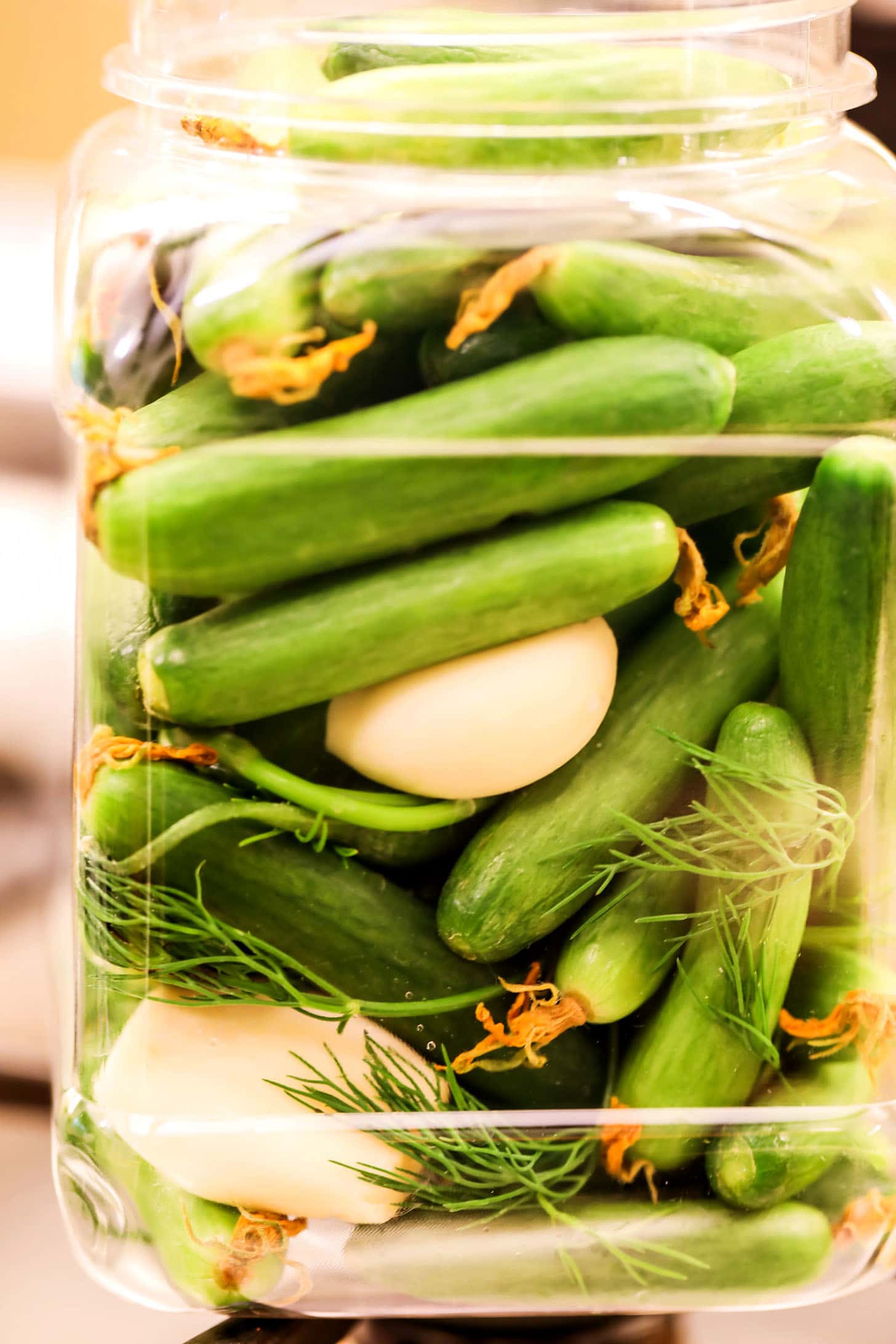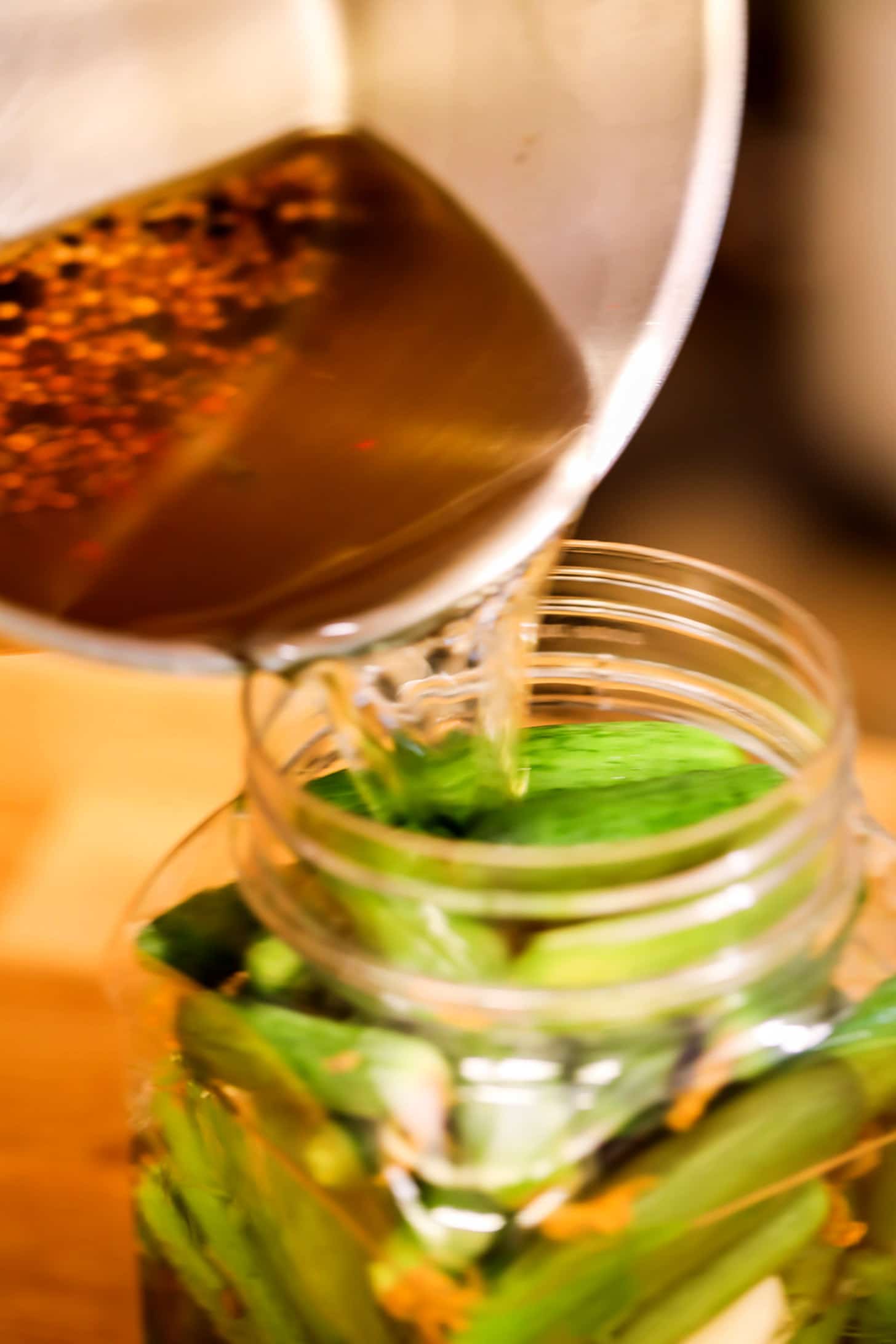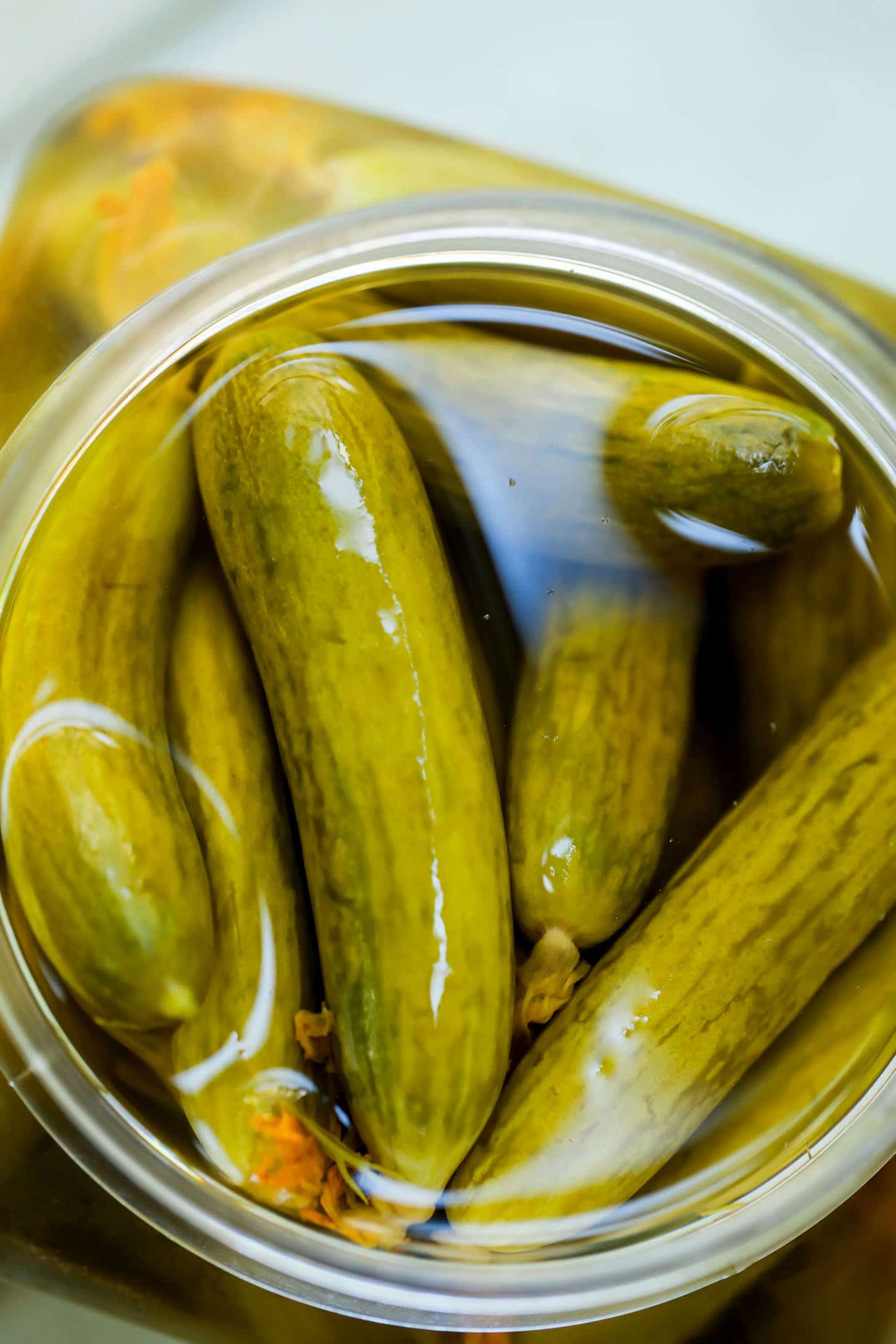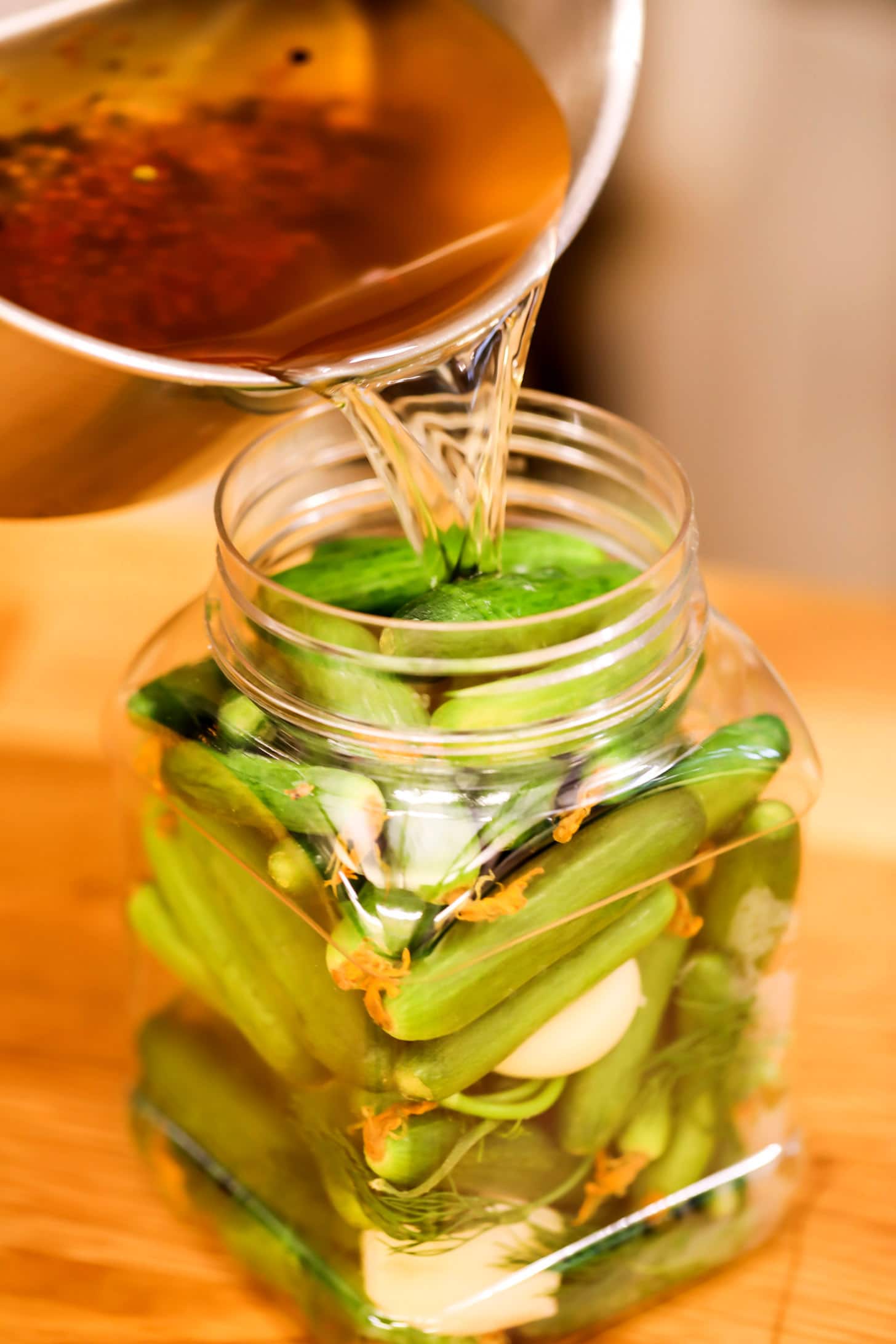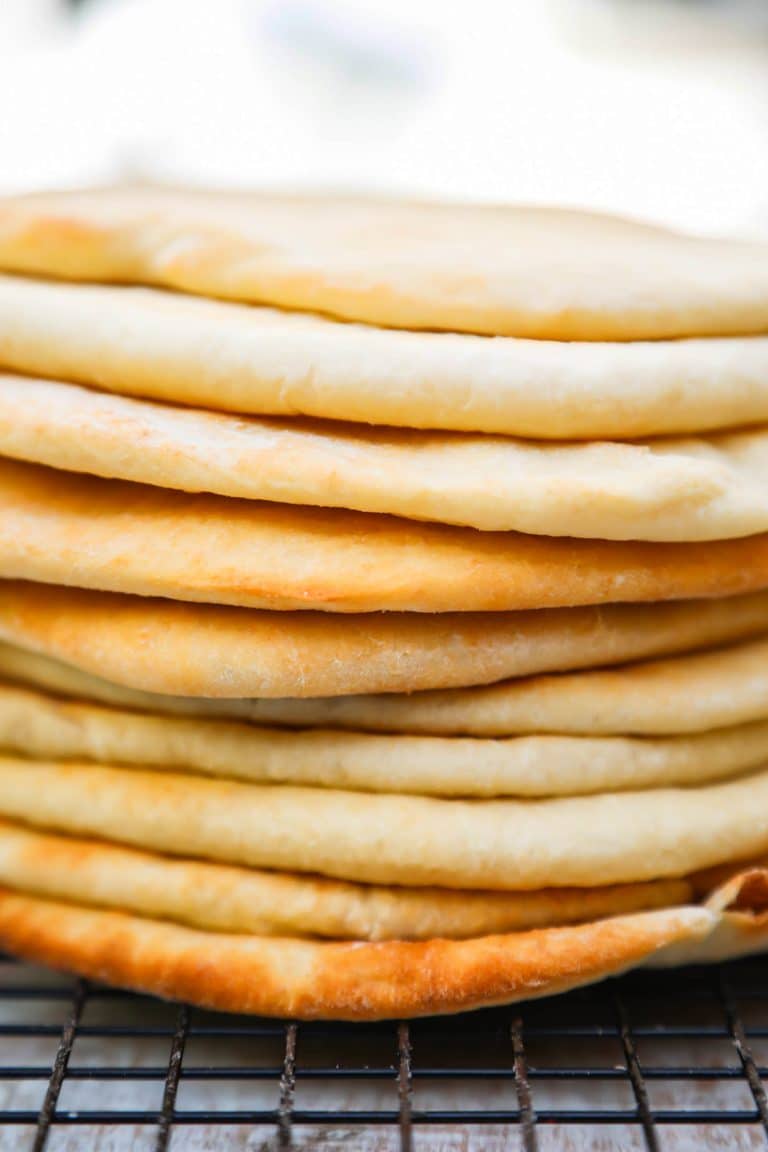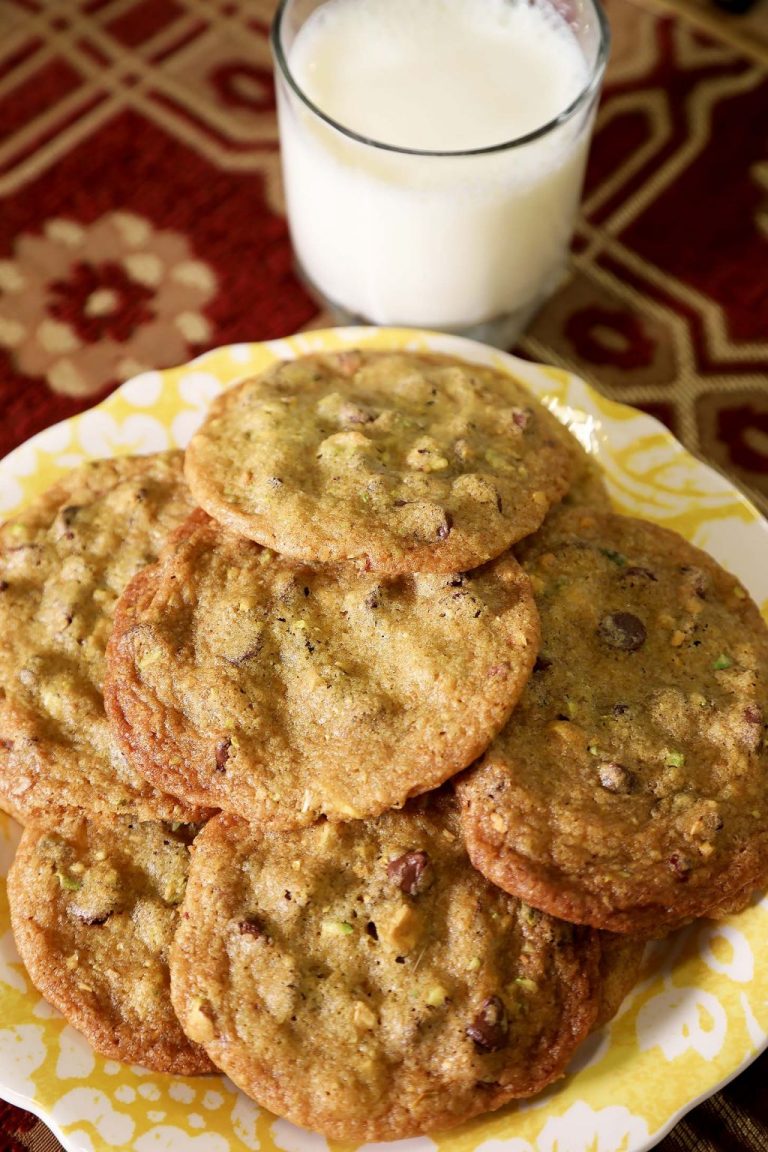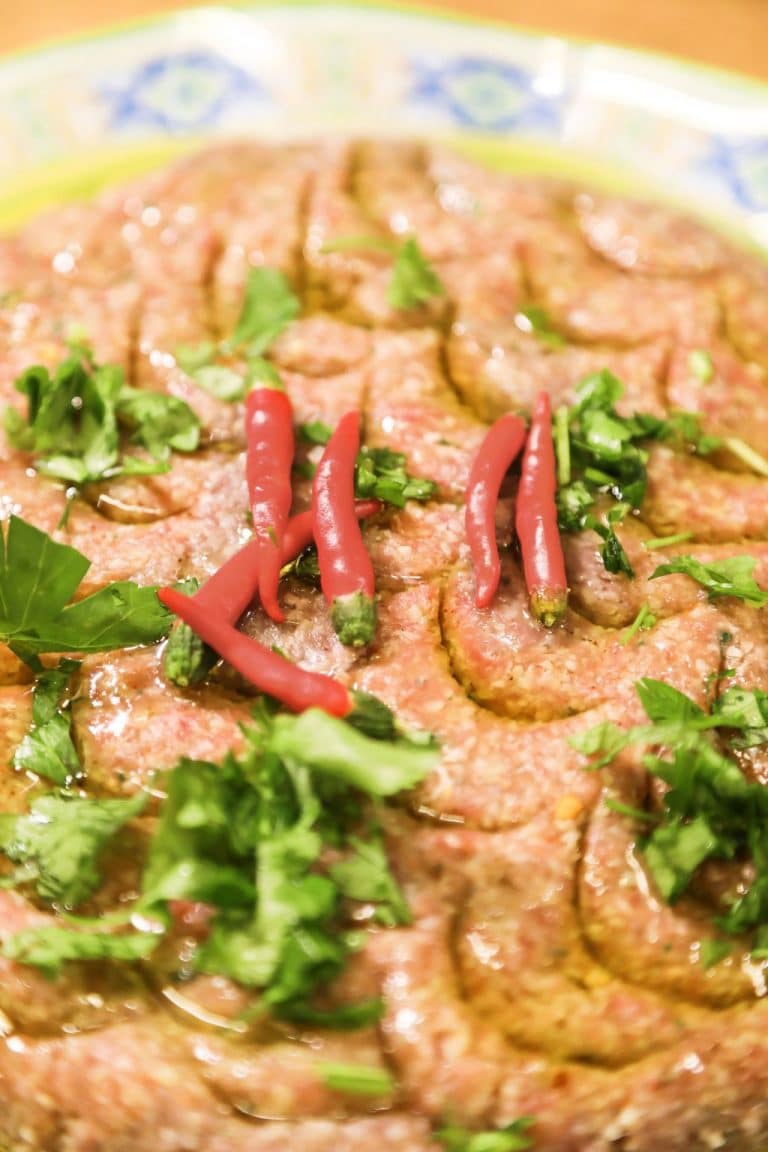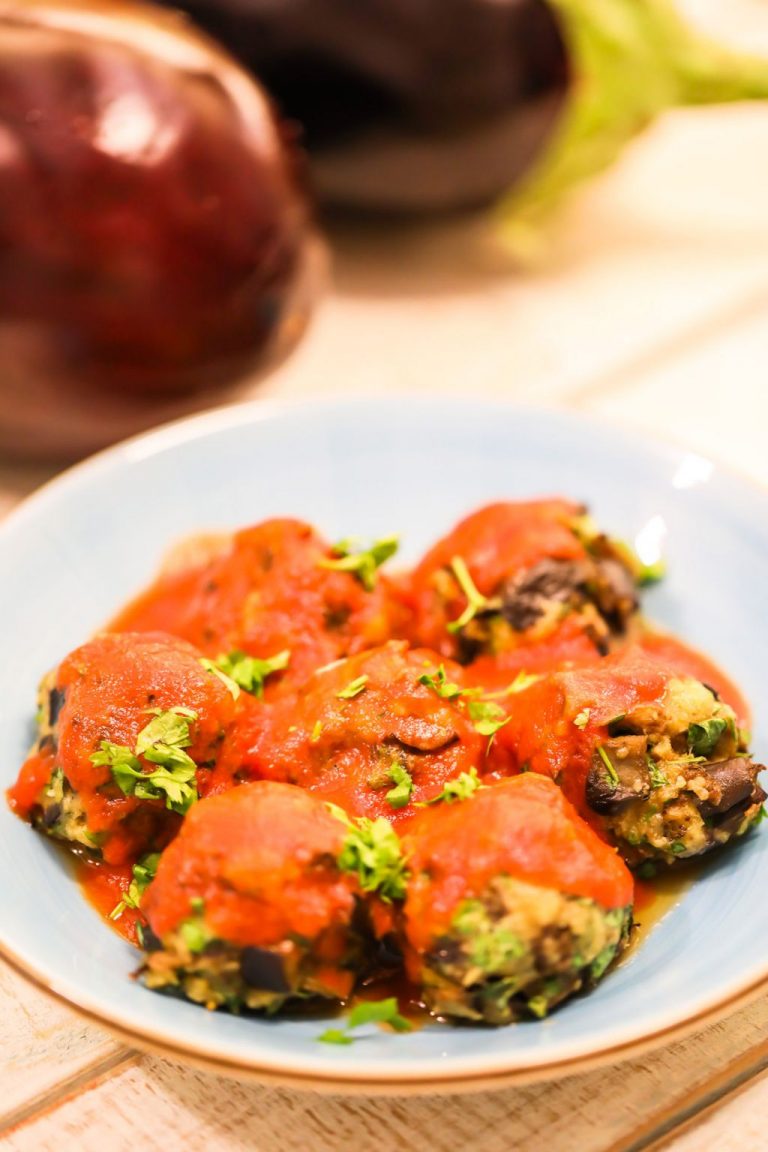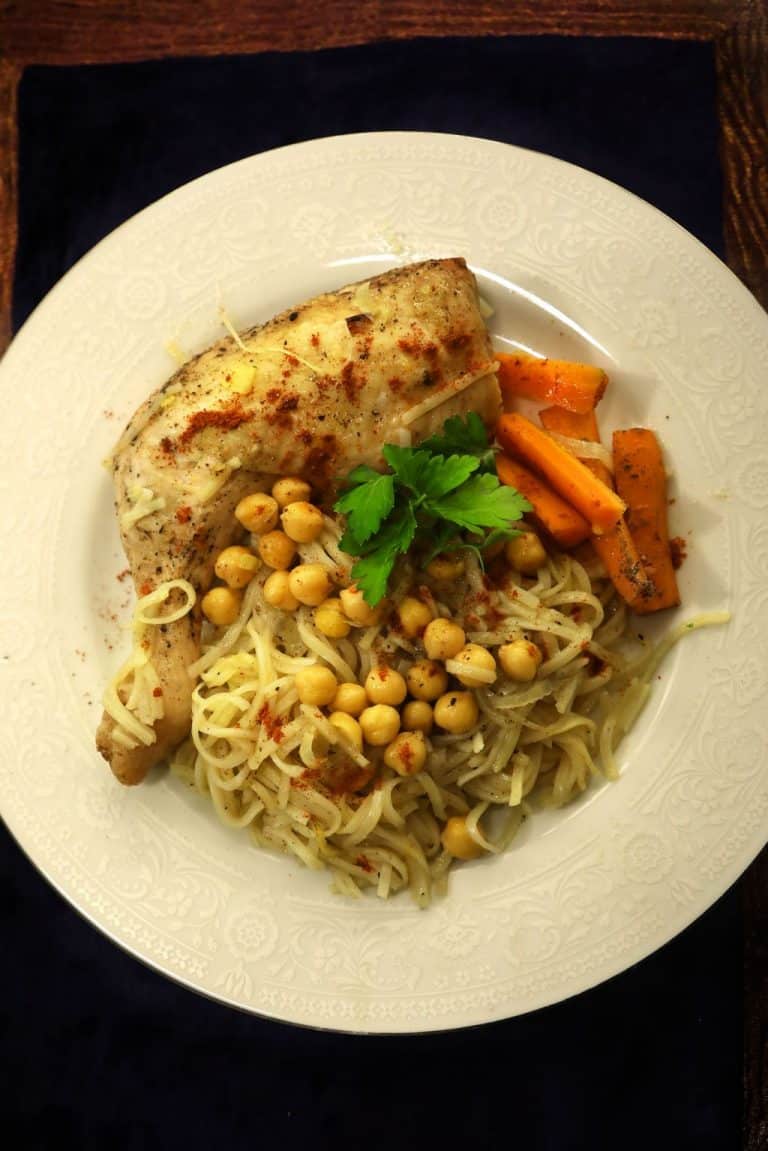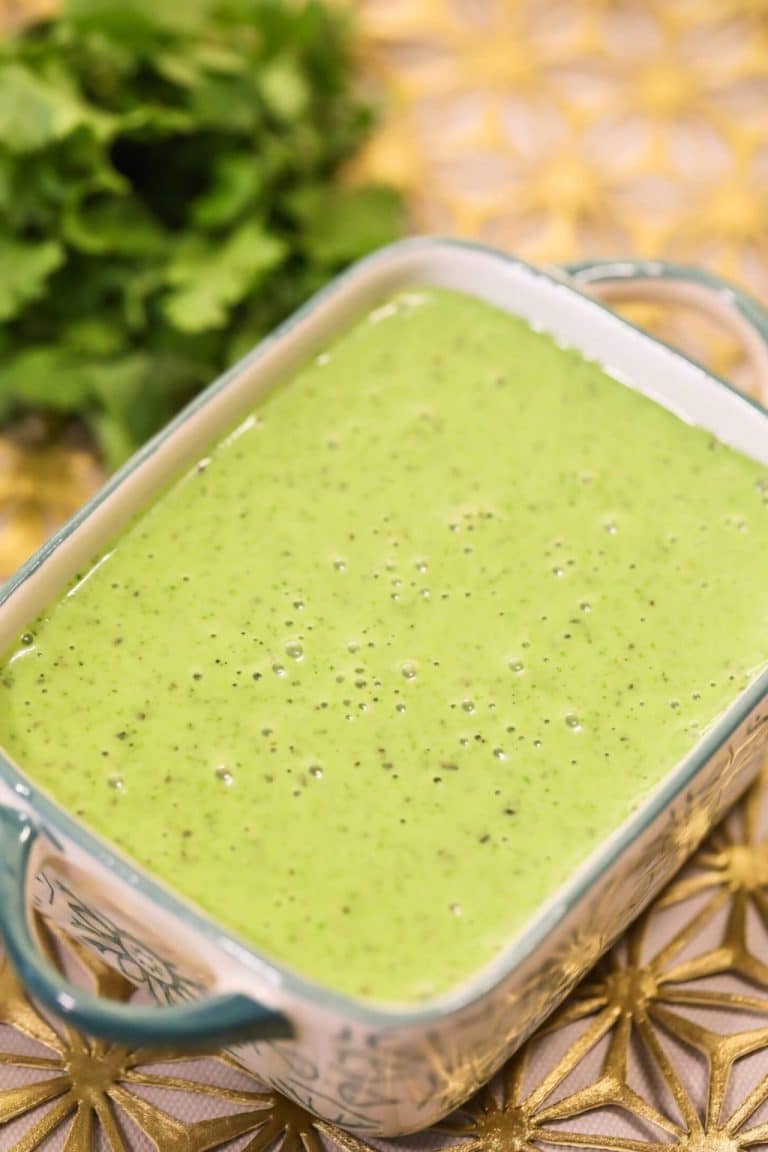Pickled Cucumbers (Quick, Easy & Tasty)
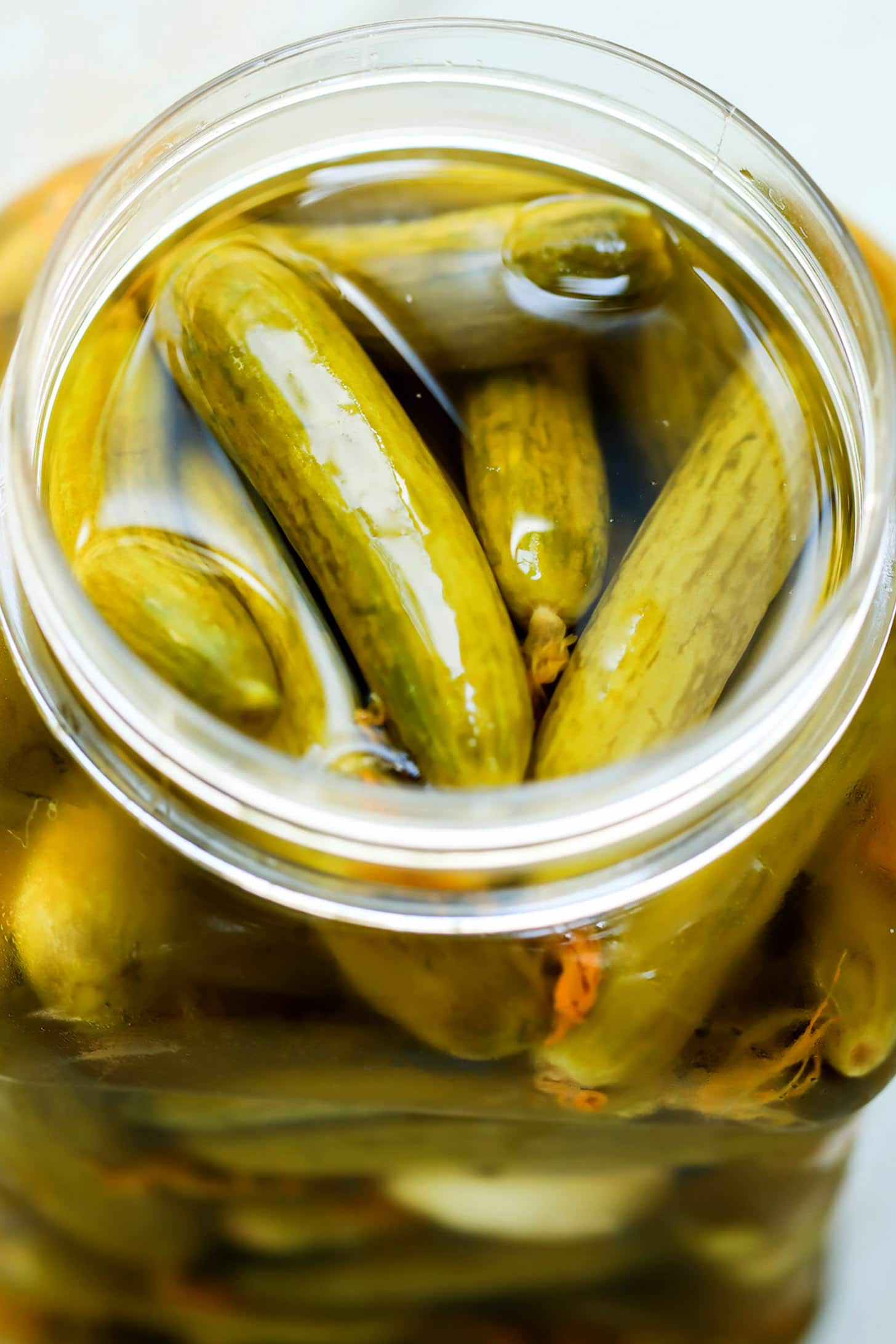
There is nothing quite like pickled cucumbers to deliver sheer excitement of flavor to your mouth.
Fermenting food is one of the oldest forms of preserving the summer’s bounty for the lean winter months.
Humans have for generations, canned, salted and pickled their food as a way to ensure consistent nutrition.
A Word on Cucumbers
The cucumber is a widely cultivated vine plant in the Cucurbitaceae gourd family that technically bears fruit.
Therefore, cucumbers are actually fruits and not vegetables as most people believe.
They are low in calories and have many valuable nutrients.
There are many varieties of cucumber, and they come in several colors; yellow, orange, red and green!
In the United States, common types of slicing cucumbers include Victory, Comet, Burpee Hybrid, Sprint, Dasher, and Conquistador.
Common types of pickling cucumber include Bounty, Regal, Duke, Blitz, Royal, and Calypso.
The common type you would find in a grocery store is the garden cucumber, or English cucumber..
A Brief Pickled Cucumber of History
Archaeologists believe ancient people of the Fertile Crescent preserved cucumbers as far back as 2400 B.C., when they began soaking cucumbers in brine.
Cucumbers that were first cultivated in India were soaked in acidic brine to preserve them.
Around 50 B.C, it is said that Cleopatra, queen of Egypt, added pickles to her diet.
At the same time, Roman emperors gave pickles to their troops, believing it would make them strong.
Christopher Columbus brought pickles to America, because they could easily survive long journeys.
Many of his sailors suffered disease due to a deficiency of vitamin C; the pickles gave a boost to the sailors keeping them healthy.
In the 19th century, Napoleon Bonaparte offered a large reward to anyone who could invent the best way to pickle and preserve cucumbers for his troops.
Pickled cucumbers caught on around the world and have become a staple of many cuisines.
How Pickled Cucumbers are Made (Industrially)
Pickle making can take up to 42 days, depending on the pickle recipe used.
The industrial process normally includes four main steps from start to finish.
These are harvesting, preservation, pasteurization, and final processing (jarring etc.).
The harvesting phase starts by collecting the cucumbers, putting them in large bins.
Next they are transported in refrigerated trucks, to help keep them as fresh as possible.
Once at the receiving station, they are cleaned well.
Cleaning the cucumber is very important, since any traces of bacteria can ruin the final pickle product.
The pickles are then transferred to an inspection station, where anything less than perfect is removed.
Cucumbers are also sorted by size, then moved to a chiller to be stored until ready to be processed further.
Generally, conversion of a cucumber to a pickled cucumber can be done in three different ways.
Fermentation, pasteurization, and refrigeration.
Fermentation is the older method, where cucumbers are transferred to large, air tight, fiber-glass or stainless steel tanks.
These tanks are filled with a brine solution, which is made up of water and 10% salt.
During the storage period of 5 weeks, the sugars in the cucumbers are broken down.
Pickles made using this pickled cucumber recipe have a shelf life of several months.
The other two methods of preservation do not need a fermentation step.
With the pasteurization method, cucumbers are bottled and exposed to high temperatures for a specific amount of time.
This step will kill all the natural bacteria.
These sterilized cucumbers can then be processed into quick pickled cucumbers.
The third method is refrigerator pickled and acidification.
Here the pickles depend on the low temperatures and vinegar solution.
They are much faster to process but have a short shelf life.
After the pickles have been fermented, the salt solution is drained.
The pickles are then immersed in water to remove all the salt remains.
Some pickles are then put through a slicing machine to cut them into the correct size.
They can be cut into slices, chips or even diced for relish; others are left whole.
After cutting, the cucumbers are placed in glass jars.
Pickle jars are then moved to a liquid filling machine, which fills them with vinegar, sugar (optional) and salt.
The pickle liquor can contain apple cider vinegar, rice vinegar along with kosher salt.
Then the final step is pasteurization and sealing, where cucumber sliced pickles are exposed to high temperatures.
Pasteurization kills the acetic acid-tolerant organisms and increases the shelf life of the pickles.
Finally, the jars are vacuum sealed by removing the air from the jars before closing with lids.
This process will maintain the pickle flavor and prevent contamination by any microorganisms.
Any air in the jar is replaced with steam just before sealing.
Once the steam cools, it creates a vacuum, and reduces the amount of free oxygen inside the jar.
Homemade Pickle Making in the Middle East
Middle eastern pickles look and taste different than American deli pickles.
These pickles have a crunchier bite to them, more garlic flavor and less of a vinegar taste.
They usually have garlic slices, dill, vinegar, and sometimes chili, all immersed in a solution of water and salt.
Often eaten on their own as a side dish, or stuffed into shawarma sandwiches, falafel wraps, or as part of a mezze table.
The water, vinegar, salt and spicing, are brought to a simmer, then cooled.
The pickles along with red pepper flakes or fresh peppers and garlic are paced in a clean glass jar.
Once the brine is cool it is added to cover all the contents of the jar, and placed in the fridge.
The pickles are ready to eat in just a couple of days, but will be more flavorful after at least a week.
The cucumbers can be left whole, cut into spears, or thinly sliced.
Nutrition of Cucumber vs Pickled Cucumber
Pickles generally have more vitamins than raw cucumbers, but they also can contain sugar and sodium which lowers their nutritional value.
They are both low in calories.
A cup of sliced cucumbers contains around 16 calories, while a cup of pickles cumbers contains 19 calories.
They are both rich in fiber, which is necessary for a healthy digestive system.
A cup of sliced cucumber has 0.5 g of fiber, while the same amount of pickles has 1.7 g of fiber.
Pickles offer more vitamin K, which is important to activate enzymes responsible for cell growth and bone health.
A cup of sliced cucumbers has 17.1 micrograms of vitamin K, while a cup of pickles offers 60.4 micrograms.
Both are also rich in vitamin A, with more in pickles than in cucumbers.
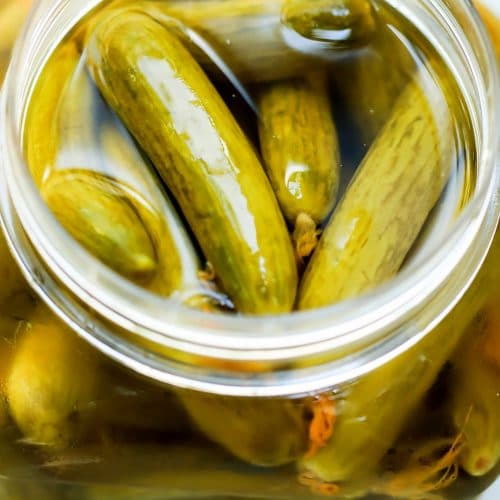
Pickled Cucumber Recipe
Ingredients
- 1 lb Cucumbers mini
- 2 cups Vinegar
- 1 cup Water
- 2 tbsp Salt
- 1 tbsp Peppercorns whole
- 1 tbsp Coriander Seeds
- 5 cloves Cloves Garlic
- Fresh Dill
- Hot Peppers optional
Instructions
- Bring the vinegar, water, salt, peppercorns, and coriander seeds to a boil.
- Turn the heat down to a simmer and allow to simmer for ten minutes.
- Place the washed mini cucumbers in a clean jar, interspersed with dill, garlic, and hot peppers, if using.
- After ten minutes of simmering, remove the vinegar mixture and allow to cool completely.
- Pour the liquid over the cucummbers to cover.
- Seal with a lid and refrigerate for at least two days.
- The flavor is even better after a week of marinating.

